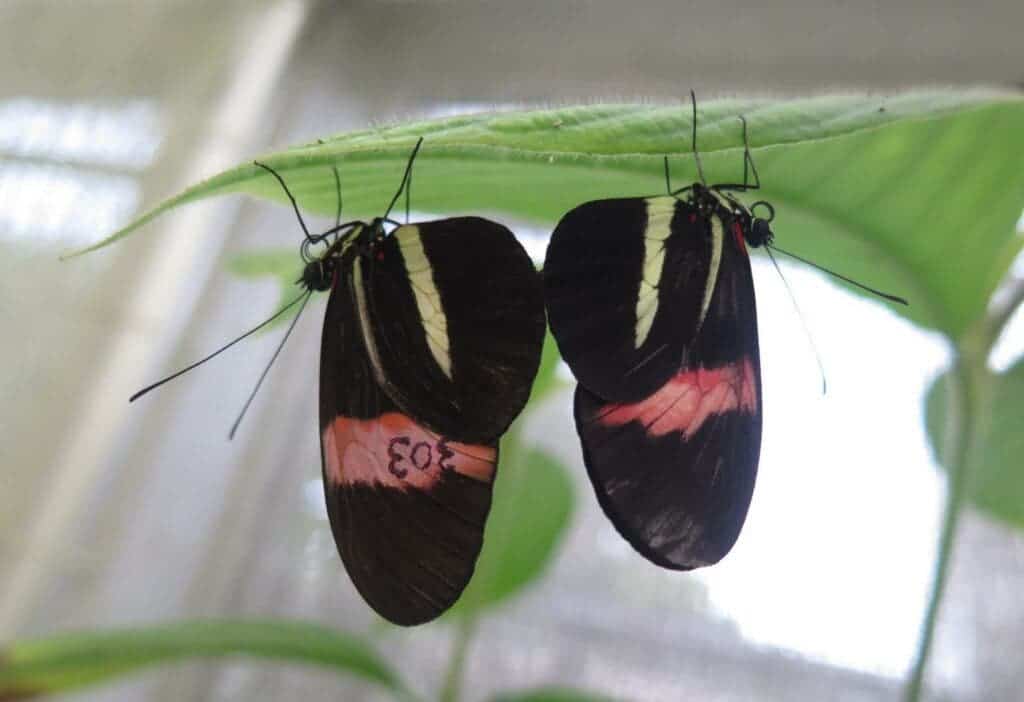
Some butterflies have evolved the ability to produce a chemical in their genitals that they spray right after sex to deter other males from persuing the females they’ve marked. Intriguingly, these same chemicals are produced by a flower to entice butterflies for pollination. So the same chemical can either deter or attract other butterflies, all depending on the context, researchers explained.
This striking mating behavior was recently identified by biologists in a species of tropical butterfly endemic to Panama known as Heliconius melponene. A research team led by Chris Jiggins, a professor at St John’s College, University of Cambridge, sequenced the butterfly’s genome and mapped the scented chemical compound to find the gene responsible for it.
In doing so, the researchers learned that the gene responsible for producing the powerful anti-aphrodisiac pheromone called ocimene in the genitals of male butterflies is also found in some plants.
“For a long time it was thought insects took the chemical compounds from plants and then used them, but we have shown butterflies can make the chemicals themselves – but with very different intentions. Male butterflies use it to repulse competitors and flowers use the same smell to entice butterflies for pollination,” Dr. Kathy Darragh, lead author of the paper, said in a statement.
Female Heliconius melponene butterflies have few sexual partners compared to other species and can store the sperm to fertilize their eggs over a number of months after a single mating. The males, however, are far less picky and will basically have as many mates as possible. Each time the male mates, he releases ocimene in order to increase the odds he may become the lucky one to fertilize the eggs
But, as discussed, ocimene, a terpene, is also produced by a variety of flowers, serving as a floral attractant to aid pollination. So what makes it act differently in plants, allowing it to produce two opposing reactions — attraction and repulsion — in the same species? “Context is key,” Dr. Darragh says.
“The visual cues the butterflies get will be important – when the scent is detected in the presence of flowers it will be attractive but when it is found on another butterfly it is repulsive to the males,” she added.
According to the researchers, the ocimene-producing gene appeared independently in butterflies and plants, signifying a convergent evolutionary event.
“We are very excited about this opportunity to study the genetics of trait evolution at multiple phylogenetic levels. In Heliconius butterflies, there are other closely-related species pairs which differ in their production of ocimene. We hope to study these other pairs to see whether changes in ocimene production is associated with similar types of genetic changes as found in our current study,” Darragh said.
The findings appeared in the journal PLOS Biology.









